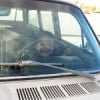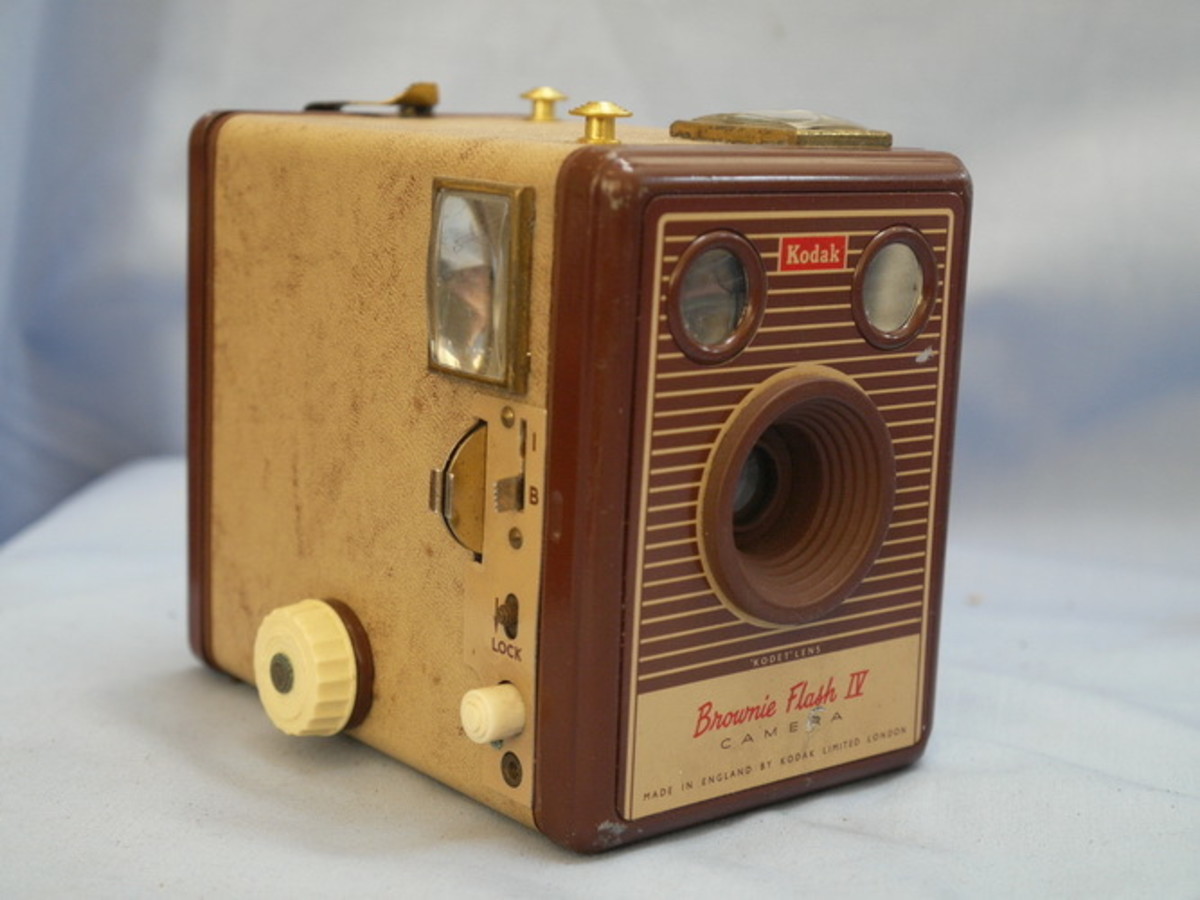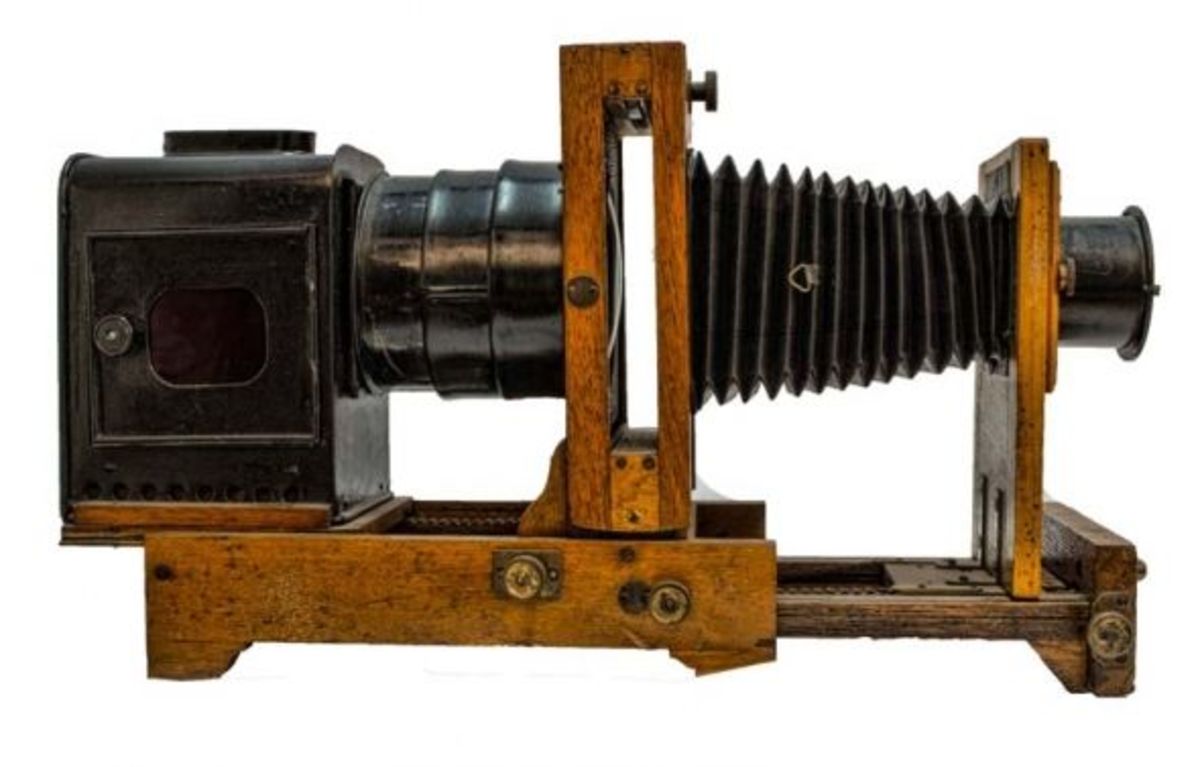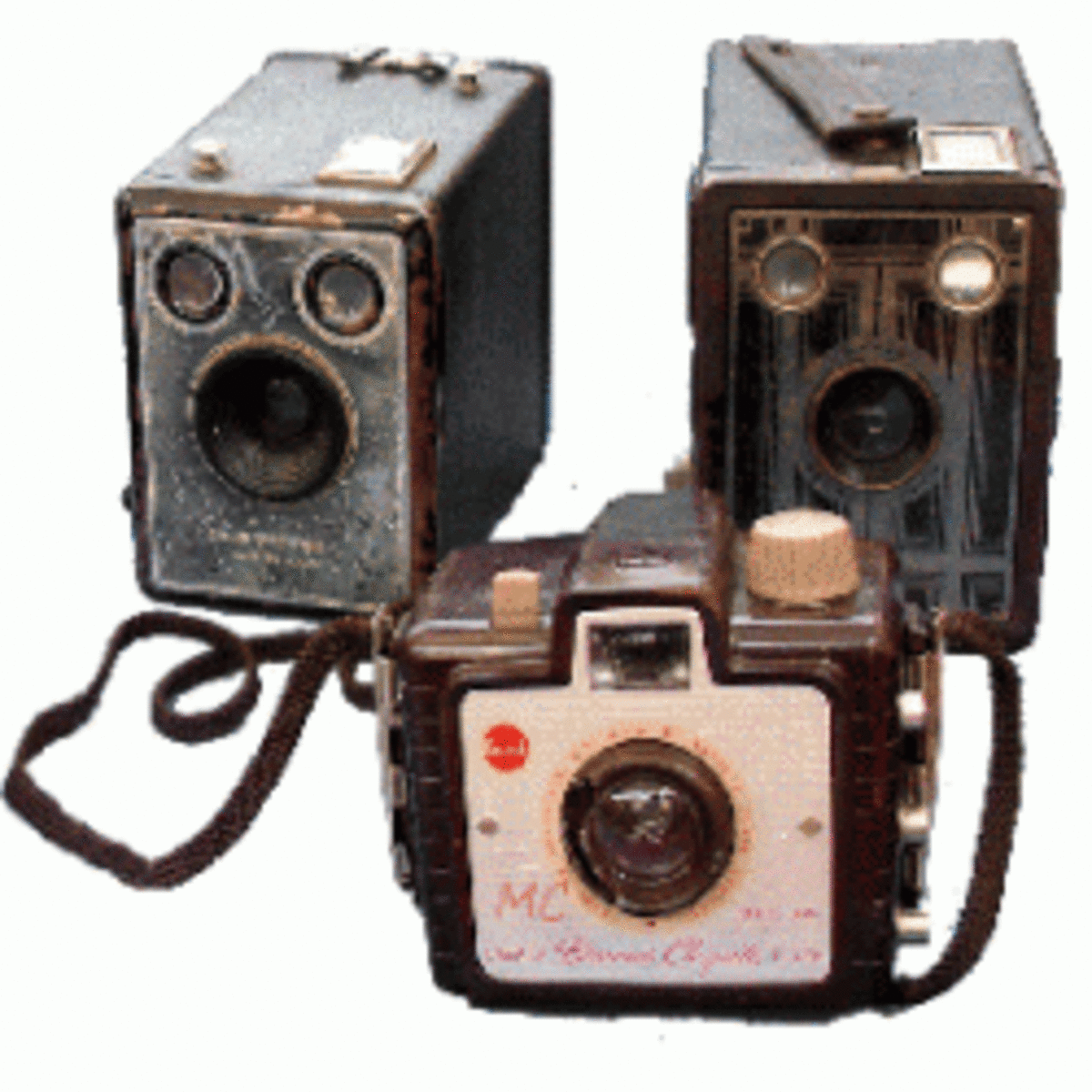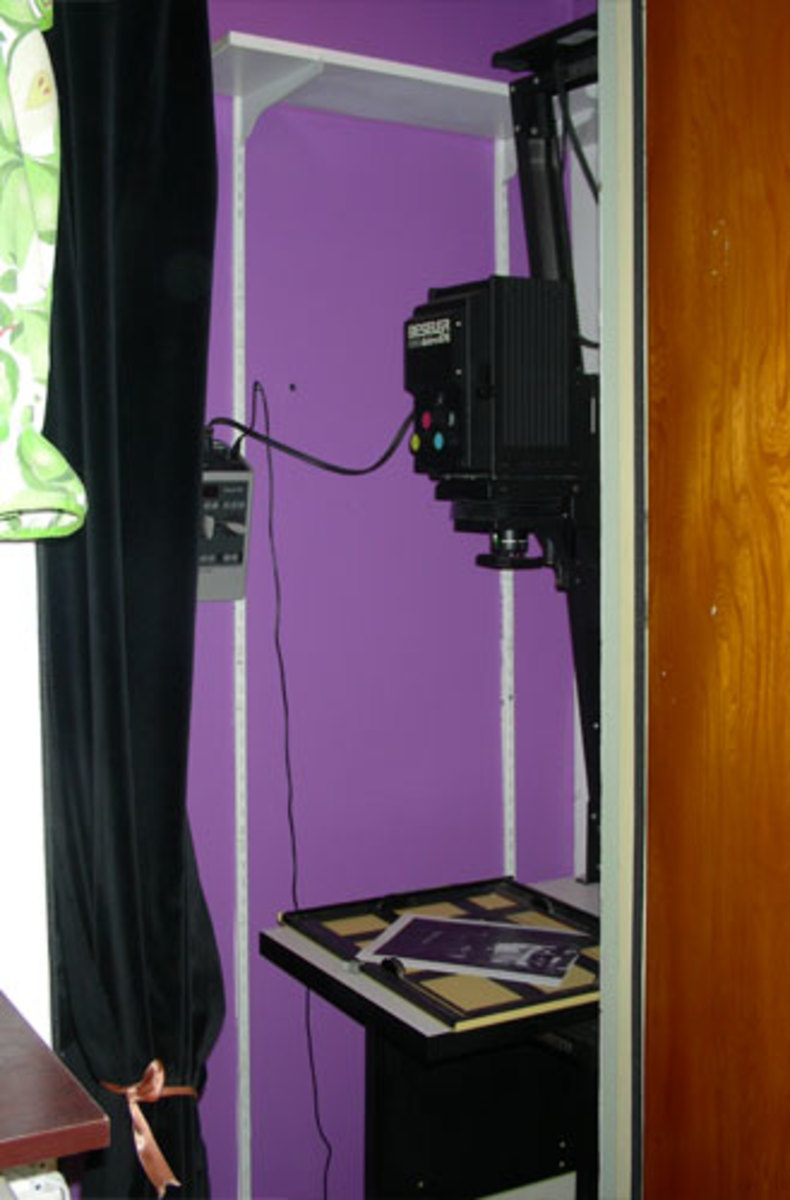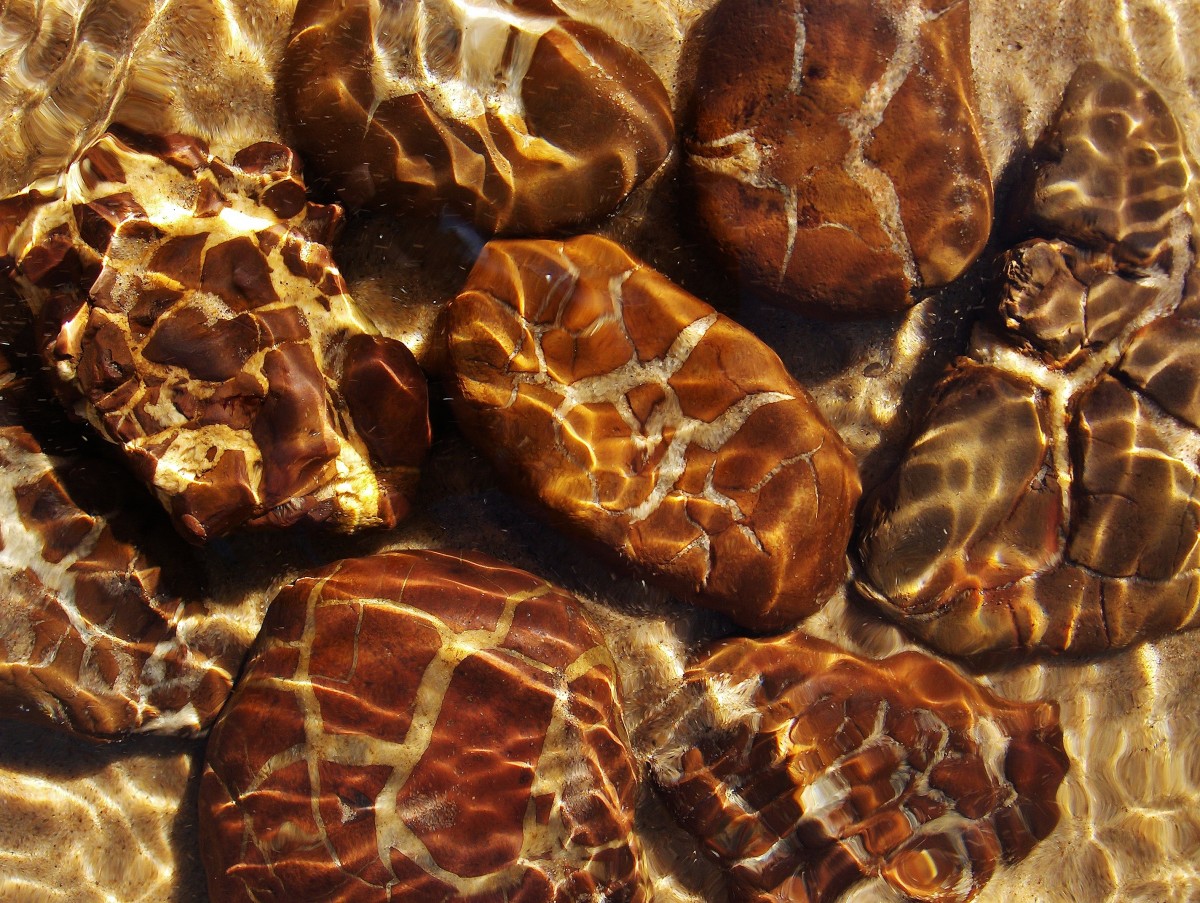Lomography Cameras
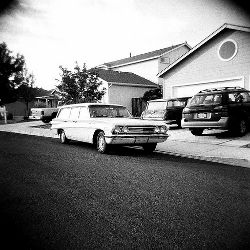
Having Fun With Cheap Toy Cameras
Lomography lets you have a lot of fun taking pictures without spending a fortune on cameras and equipment. If you're burned out from spending hundreds or thousands of dollars on a DSLR or the latest mirrorless wonder (not to mention lenses and accessories) you might be amazed with how much fun you can have with lomography - cheap toy cameras taking low tech photos.
Two of the most popular cameras for lomography are the Dianna F+ and the Holga 120. Both take medium format film and take great lomo-style pictures When I first wrote this in 2011, both were available for around $40. As of today (early 2023), the Holga 120N is still only about $40, but the Dianna is (sadly) almost $100. Some other good cameras (like the Sprocket Rocket) are no longer available new, and very expensive if you can find one used.
Even though some prices have gone up on some cameras, and others have been discontinued, there are still some really interesting, cheap plastic cameras for $80 or less that take some pretty amazing lomography pictures.
Holga 120
Medium format, best lomography camera for beginners...
My first lomography camera was the Holga 120N. I've tried others since, and in my opinion this is the best camera for getting started in lomography. First of all, it's affordable - you could even call it cheap - so if it turns out you don't like lomography, you're not out a lot of money. Second, despite it's cheapness it doesn't seem prone to breaking after just a couple rolls of film like some of the other "toy cameras" are. Finally, it takes great pictures. At $30 (including free shipping) from Amazon, you really can't go wrong...
Before you pull the trigger on this, there are some things to be aware of... the Holga 120 uses 120 film, so you'll probably have to get your film developed through mail order. It has a fixed, 2-position aperture (f13 and f20) and shutter speed (1/100 second - give or take) so you're pretty much limited to shooting outdoors in good light. It doesn't have a built in flash (which is a good thing IMO) so if you want to shoot indoors be sure to buy an add-on flash. (They do make a version with built-in flash, but if it breaks there's no way to fix it). If you can live with the limitations, this is a great little camera and a LOT of fun. (Don't waste your time or money on the 35mm Holga - the pictures it takes don't have that dreamy lomo quality you get from the 120 model)
Sample Pic - What to expect from your Holga 120...
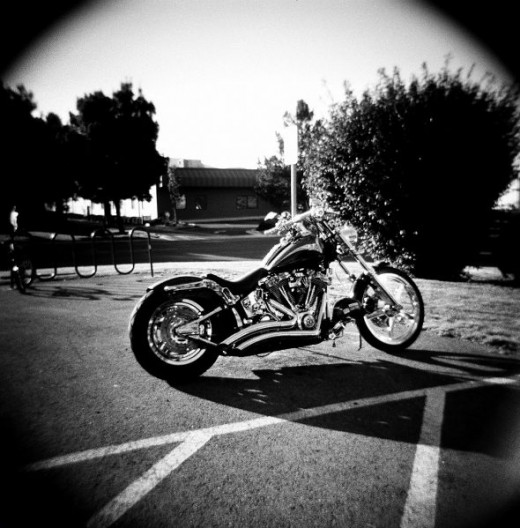
Find Your Holga on Amazon - Don't get confused - get the 120N...
If you buy a Holga, don't be tempted by the Holga 135. The pictures it takes just aren't that good - nothing at all like the ones you get from the Holga 120. If you simply MUST have a Holga that shoots 35mm film, get the 120 anyway and buy a 35mm film adapter for it.
"Fixing" the Holga
In a nutshell, Just Say No...
If you do a Google search for "holga mods" you'll find many sites with "fixes" to purported "flaws" in the Holga. My best advice on these is DON'T BOTHER. Some of these mods aren't applicable any more because they're already incorporated into the latest versions of the camera (6x6 format, bulb mode, tripod mount). Others defeat the purpose of shooting with a Holga in the first place (sealing light leaks, internal flocking). The best way to enjoy this camera is to accept it for what it is - an incredibly simple cheap plastic camera. Learn to work with its quirks and limitations and it will reward you with some really amazing pictures - no "hacking" required.
Sprocket Rocket
Very well built, 35mm film, awesome panoramic shots...
My second lomography camera was the Sprocket Rocket. Like the Holga, this is a zone focused camera with a fixed aperture (f10.8 and f16) and shutter speed (1/100 second). It seems much better constructed than the Holga which I guess is part of the reason it costs about twice as much. It also has a bulb setting for the shutter and multiple exposure capability (but you have to rewind the film between shots to get it). It takes any 35mm film but you don't get regular 35mm exosures, which is the really cool thing about this camera. The exposures are twice as wide as "normal" 35mm, giving you nice panoramic shots. Even better, the exposure area includes the sprocket holes on the film, resulting in a very cool effect - but only if you have your film processed by someone who knows what they're doing (one place that does is thedarkroom.com). If you search Flick for Sprocket Rocket pics you'll find some amazing stuff. I'm still working my way through my first roll of film but I can't wait to see what I get.
Sample Pic - What to expect from your Sprocket Rocket...
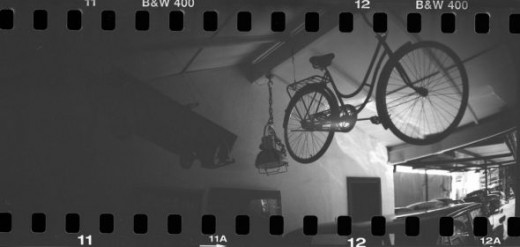
Lomography Action Sampler Camera
A very cool cheap plastic camera...
The Action Sampler is a very cool lomography camera that puts 4 separate images on each picture. If that's all it did it wouldn't be a big deal, but each of the images is taken 1/4 second apart. Instead of getting 4 identical images, you get 4 slightly different images of your subject in action. I don't have an Action Sampler yet but it's definitely on my list of must-have cameras. At less than $30 it would be hard to go wrong...
Sample pic - What to expect from the Action Sampler...

Lomographic Super Sampler Camera
Another cool 4-image camera...
The SuperSampler Camera is similar to the Action Sampler, but instead of arranging the four frames into a 2x2 grid they're arranged sequentially across the picture. This sequence gives better results for some subjects like moving cars, etc. I like both the Action Sampler and SuperSampler, and at the prices they sell for there really isn't a reason to not have both - and I hope to add both of them to my collection of cheap plastic cameras...
Sample Pic - What to expect from the Super Sampler...
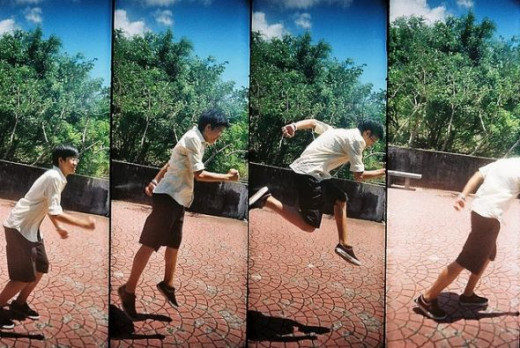
What Makes a Good Camera for Lomography?
There are a few things that go into the making of a great lomography camera. They are mostly the exact opposite of what goes into making a great camera for regular photography. Here they are...
Lomography Cameras - Avoiding Disappointment
What to expect, what NOT to expect...
Are these cameras worth the money? If you read the reviews on Amazon it can sound like these cameras are junk. That's not true though. A broken camera is one thing, but most of the negative reviews I've read seem to be written by people who didn't understand quite understand the concept of lomography and lomography cameras.
What to expect. The whole point of lomography is that cheap cameras have certain faults (I like to call them quirks:) ) like poor quality lenses, poor light seals, internal light reflections, etc. These quirks mean you're going to get pictures that are slightly out of focus in spots, vignetted (dark around the edges), and might be over exposed or washed out in only some areas. If you're shooting color film, your pictures may have oversaturated colors or even a rainbow effect. Together these make up what is known as the "lomography effect." If you like the look of these kinds of photographs, chances are you'll end up loving your lomo camera...
What NOT to expect. Lomography cameras are cheap. That means they probably won't last as long as a quality built camera. They have cheap plastic lenses that won't take razor sharp pictures. Most are extremely limited when it comes to adjustments, especially shutter speed. If you're looking for a camera that takes sharp pictures under most conditions, or approaches the quality of even an old point and shoot 35mm camera, you're likely to be dissappointed with a lomo camera - so don't buy one.
1. Cheap Plastic Body
First of all, a lomography camera has a cheap plastic body. This is one of the two defining attributes of a lomo camera. The cheap plastic body serves a very important function - the seal between the front and back of the camera isn't perfect, so you get tiny, variable light leaks that affect the film, and hence affect the pictures.
Cheap Plastic Lens
The second defining element of a lomography camera is its cheap plastic lens. These lenses have a softer focus than the better quality lenses on more normal cameras, and give your pictures a more low tech look.
